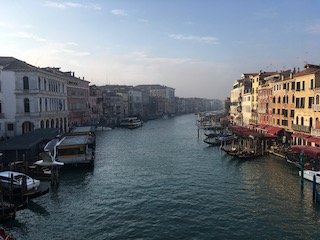Performance Goals
In studio performance classes we have a practice called “performance goals.” Very simply, this means that students have to decide what they want their performances to focus on each time they play for their class. This might translate to goals around dynamic contrast, or memorization, or tempo consistency. It hardly matters, really. The idea is to get students to identify a specific point of focus rather than just sitting down at the piano with nothing but the vague thought, Well, I hope this goes OK.
Performance goals are something a young student grows into during the course of their piano study. At first, beginning pianists aren’t required to announce their performance goals, but they learn the art from observing their older peers. My favorite performance goal moment of all time came the afternoon one small child, after several months of lessons and a few performance classes under her belt, stood up and said, “My performance goal is that I’m going to play with two hands.” That’s the spirit, kid.
Before the trip began, I had what you might call travel performance goals. Two of them, to be exact: Vienna and Venice. Venice, we heard repeatedly last fall, was flooded. Yes, I kept saying, but we have never been, and given the state of the world, the state of Venice is not likely to improve. We should go anyway. I was, Matt would tell you, stubbornly persistent.
On our last afternoon in Budapest, we started planning the next leg of the holiday with a new set of Grab Bag notes to work with: 1. Ten days remaining before needing to be back in the U.K.. 2. Transit strikes in Paris affecting most everything including, possibly, the Chunnel train back to London. 3. All trains to anywhere on our list would take us back through Vienna. 4. We liked the pace we were setting of staying in a place for three days. 5. Venice?????
It was like a logic puzzle of train schedules and travel routes and waging against the odds: do we risk ending up in Paris and hoping the strike is over? What about the Eurostar from Brussels to London? And what about Venice? Performance goals are important, just ask the kids. Long story short: after several hours of debate, from Budapest we hopped on a train to Venice.
Venice does not disappoint. One could write volumes about Venice, and plenty of people have. In Venice Observed, Mary McCarthy writes that nothing can be said about Venice that has not been said before. Including, she admits, that statement. There are no original thoughts to be had or observations to make. It is—as everyone has said in one way or another— the most romantic and charming city imaginable.
We arrived on the night of a full moon and, using Google Maps, quite miraculously made our way on foot through the maze of streets, alleys and canals to our rented apartment. The next morning we woke up to fog, which cleared out by noon. And in spite of the dire warnings, Venice was not flooded–no wellies needed. It was sunny and (relatively) empty of tourists. Ah! the joys of January travel. We drank tiny coffees in corner cafés. We ate pasta and pizza and seafood and drank carafes of wine. We admired the glass and the shoes and the marbled paper in small artisan shops. We spent a day in Murano (glass) and Burano (lace) and rode water taxis for hours. Over and over again we got lost in the labyrinth of bridges and alleys and streets and plazas. Venice is an apt metaphor for travel in general: happily, and sometimes uncomfortably, we lose ourselves, over and over and over again.
One afternoon we struck up a conversation with the owner of a beautiful paper shop near our apartment. He asked us where we were from and one thing fell into the next. Before we knew it, he had scrawled out our next travel steps on a piece of scrap paper: Siena, Montepulciano, Lucca, Pisa, Assisi, Orvieto and on to Rome and from there a flight back to London. Check, check, check.
And so it happened, almost precisely as the kind bookbinder had predicted. In the last week, we have made our way south on train and bus from Venice to Siena to Orvieto to Rome.
After spending the last ten days in Italy, I am convinced that one can honestly claim to have “done” Italy if every morning one lingers over a cappuccino in a corner window of a café and watches the locals come in, order, and gulp down their espressos at the counter, while at the same time one keeps an eye on the street style, dog walking and general bustling activity outside. Then one should wander, preferably down deserted and winding alleys and into churches and museums without purpose or agenda. Then there is lunch, which is yet another opportunity to watch the Italians in action, for although the morning caffeine consumption is a hurried affair, lunch is not. Italians can talk to each other for hours. It is a beautiful thing to watch. Then comes an afternoon of more wandering, perhaps also a nap with a book or a bit of shopping. Finally, on to dinner, still another cultural and gastrological phenomenon. This is a good day of travel in Italy. And this, in fact, is what we did. Venice, Siena, Orvieto and then Rome: Sitting, wandering, eating.
Now that I think of it, this is perfect day of travel anywhere. Of course, in the end, even an empty travel itinerary isn’t just random improvisation, however perfect. A whole month (!!!) unfolds one logical step at a time, just like any thoughtful practice: you do this, and then this, and then this…There are very few crossroads in life or in travel, really. One thing simply leads to another.
Vienna, check. Venice, check. Siena…Orvieto…Rome…Performance goals blur. We have lost ourselves.
